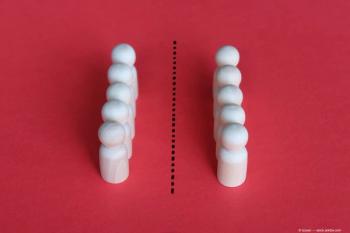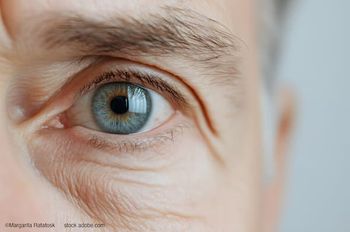
Large series sheds light on incidence, outcomes of toric IOL repositioning
Study finds similar results for patients who received hydrophobic, hydrophilic acrylic lenses
In a large retrospective, single-site study, there were similar outcomes in patients who received repositioning surgery after toric IOL implantation.
Reviewed by Aravind Haripriya, MBBS
In what may be the largest series to date to report on the outcomes of toric IOL repositioning surgery, 2.4% of patients receiving a hydrophobic lens and 1.6% with a hydrophilic acrylic lens required repositioning surgery, said
Visual outcomes were good for both groups after surgery. The study was a retrospective case series of 4,273 patients who had toric
Patients received a hydrophobic acrylic toric IOL (SN6AT, AcrySof; 733 patients) or hydrophilic acrylic (FH560; 3,540 patients) toric IOL. The average patient age was 61.8 years, and there was a mean preoperative astigmatism of 2.33 D. The mean axial length was 23.19 mm, and the mean IOL power was 18.75 D.
The IOL alignment was assessed after surgery via the slit lamp, with maximum pupillary dilation. If the toric IOL axis on the slit lamp was misaligned more than 5° from the intended axis, the IOL position was reconfirmed using ray-tracing technology (iTrace, Tracey Technologies). On day 15 postoperatively, patients were seen again to be reassessed for their IOL position and to plan for repositioning surgery if needed.
Repositioning surgery was planned under the following circumstances:
- There was a misalignment of more than 15°,
- Surgeons determined that unaided visual acuity could improve significantly with correction of the misalignment, or
- Patients consented to a secondary surgical intervention.
Surgeons used the ray-tracing technology to assess the
After the second surgery, visual acuity, refraction, and IOL axis were again assessed. Repositioning surgery took place an average of 20 days after cataract surgery. The mean unaided visual acuity after repositioning surgery was 0.14 D. No patients required a second rotation surgery.
Although their study was retrospective, all surgeries were done using a standardized protocol because they were completed at the same practice. This is an advantage of the study, along with the study’s large size. She contrasted her group’s results with another study that compared repositioning surgery rates.1 In that study, repositioning surgery was competed in 1.6% of eyes that received the Acry Sof IOL compared with 3.1% that received a Tecnis IOL.
Disclosures:
Aravind Haripriya MBBS
E: [email protected]
This article was adapted from Dr. Haripriya’s presentation at the 2018 meeting of the American Academy of Ophthalmology. Dr. Haripriya has no related disclosures.
References:
1. Lee BS, Chang DF. Comparison of the rotational stability of two toric intraocular lenses in 1273 consecutive eyes. Ophthalmology. 2018;125:1325–1331
Newsletter
Don’t miss out—get Ophthalmology Times updates on the latest clinical advancements and expert interviews, straight to your inbox.
















































.png)


